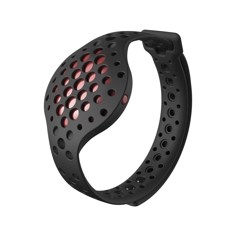
Top 20 fitness trends of 2016: wearable tech beats all
Digital devices that track steps and heart rate prove more popular than high-intensity interval training, calisthenics and yoga in a survey of more than 2,800 health and fitness professionals from around the world
Have you been tracking your daily step count, run route, heart rate or sleep quality with a wearable device? If you haven’t, perhaps it’s time to get on the bandwagon. Wearable technology is the top fitness trend for 2016, according to exercise professionals polled by the American College of Sports Medicine (ACSM).
“Wearable technology has overtaken activities like body weight training and high-intensity interval training to claim the number one spot in this year’s survey,” says Walter Thompson, lead author of the survey and associate dean in the College of Education & Human Development at Georgia State University in Atlanta. “Consumer interest in fitness technology may signal that the low-cost, DIY exercise trend is waning.”
SEE ALSO: The top 20 worldwide fitness trends for 2016, according to experts
Introduced a few years ago, wearable technology includes fitness trackers, smartwatches, heart rate monitors, and GPS tracking devices. Popular fitness and activity trackers include those from Misfit, Garmin, Jawbone and Fitbit. The Apple Watch is the new “kit” on the block.
The market for wearable technology is growing rapidly, with global device shipments reaching 76.1 million units in 2015, up 163.6 per cent from 2014, according to a recent report by research firm IDC. By 2019, worldwide shipments are expected to reach 173.4 million units, a growth rate of nearly 23 per cent over the next five years.

“Tech devices are now central to our daily lives and have changed the way we plan and manage our workouts,” Thompson says. “Wearable devices provide immediate feedback that can make the wearer more aware of their level of activity and motivate them to achieve their fitness goals.”
It’s the first time wearable technology has appeared in the ACSM’s Worldwide Survey of Fitness Trends annual report, which is in its 10th year.
Two additional trends debut in the top 20: flexibility and mobility rollers, and smartphone exercise apps. Previous top trends, high-intensity interval training and bodyweight training, rank second and third respectively.
Dropping out of the top 20 for 2016 were children and exercise for the treatment/prevention of obesity, worker incentive programmes, and boot camp.
“The 2016 survey results seem to reinforce the findings of previous years, which was expected when tracking trends and not fads,” says Thompson. “Remaining out of the top 20 trends for 2016 were Zumba, Pilates, and indoor cycling.”


Experts were not surprised to see wearable technology as the top trend.
“This supports the increased marketing and sales of gadgets engineered to make daily activity easier,” says Bridget Peters, a medical student of Edward Via College of Osteopathic Medicine in South Carolina.
James Stinear, academic director of clinical exercise physiology programmes at the University of Auckland, New Zealand, says wearable technology’s ranking raises a number of questions. Will wearable technology address the major concern facing public health authorities in the developed world? That is, will it help us find a way to motivate everyone to exercise for life and eliminate physical inactivity from the community?
“Regardless of the most effective system for improving one’s body shape or reducing the risk of metabolic, cardiac or degenerative disease, what matters most to society is slowing the alarming increase in rates of morbidity and mortality linked to physical inactivity. To achieve this, people need to be motivated to exercise.
“If wearable technology is the answer to the problem or even part of the answer [and I think it is], we should find an upward trend in the use of wearable technology in future surveys that can be linked to a slowing of morbidity and mortality rates related to non-communicable diseases.We will have to wait and see,” says Stinear.


